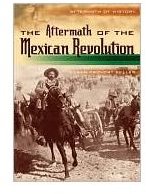News at Eleven! Engaging Lessons on the Mexican Revolution
History often repeats itself. Students will find that to be true when they study the Mexican Revolution, which began in 1910 and lasted for seven years. The poor working people felt ignored by those in power. They had no say in what went on in Mexico. Land and wealth was controlled by a small percentage of the people, foreign countries and the Catholic Church. The rich got richer and the poor became more oppressed until they reached a point when they could take no more.
Approach this time in history by planning engaging lessons on the Mexican Revolution. Assign news reporters to report events and interview major figures in the revolution.
Lesson Objectives
1. Students will practice research techniques using available resources.
2. Students will participate in an oral presentation in front of the class.
3. Students will understand the reasons for the Mexican Revolution.
4. Students will compare and contrast this revolution with other familiar uprisings.
5. Students will learn about influential individuals in the revolution.
It’s News Time! Be Prepared.
You may choose to assign topics to specific students based on ability or you may decide to have random selections. Some topics can be done in pairs depending on the number of students in your class.
Watch several news programs on television and instruct students to pay particular attention to the types of questions the reporters ask and the type of information that is important to a news story.
To prepare, each individual, pair or group should:
- Do thorough research on the assigned person or topic using websites and books
- Provide a list of questions about the person or topic to assist the news reporter in doing an effective interview
- Gather props or costumes for more authenticity
Topics and Historical Figures
-
Porfiriato: The era of President Diaz from 1876-1910.
-
Porfirio Diaz: President of Mexico, in power for thirty years. He promised to modernize the country and help the peons.
-
Peons: Poor laborers who felt ignored.
-
Foreign influence: Countries that invested in Mexican land and had power.
-
Catholic Church: A powerful and rich entity whose missionaries influenced indigenous people and owned land.
-
Francisco Madero: Ran against Diaz in an election.
-
Francisco Leon de la Barra: Interim president while Madero lead a revolt because of an unfair election.
-
Emiliano Zapata: Represented the peasants and initially sided with Madero. He fought for redistribution of land. He formed an army of peasants and they were a powerful force in history. Zapata’s plan was called Plan of Ayala.
-
Pancho Villa: Nicknamed the Mexican Robin Hood, he did not have a specific plan but wanted change.
-
Victoriano Huerta: Madero was arrested and Huerta took over as president. He tried for reform but many bloody regional uprisings occurred.
-
Pascal Orozoco: Formed an army against his former friend Madero.
-
Regional armies and uprisings: Rebels did not have a united front and fought against each other. Workers refused to work and people were starving. The economy suffered.
-
Venustiano Carranza: Became president of Mexico in hopes of uniting the revolutionaries. He was backed by President Wilson.
-
Woodrow Wilson: President of the United States who wanted the uprisings in Mexico to stop and the interests of the United States protected. He sent troops to capture Pancho Villa.
-
General Pershing: Sent to capture Pancho Villa in Mexico.
-
The Mexican Revolution compared to other revolutions: There were no major battles and no well-defined victory.
-
Women in the Revolution: Women did the routine chores and even participated in the fighting.
-
Battle Sites and Casualties Throughout Mexico: Use a map to mark the battles.
-
The Queretaro Convention: Following the revolution President Carranza convened a constitutional convention. There were two opinions on what should be changed. The big issue was how quickly and how extensively reform should happen.
-
History Repeats Itself: How do the causes of the Mexican Revolution compare with modern day issues?
Presentations
Produce a video recording of the news stories and show the final product to your class. Or, if you have more than one class, show the video to a different class than the one that created it. Then assess what students have learned.
You may have capable students or a parent volunteer to video tape the presentations. Begin by having an “announcer” introduce the entire news video. Students can create a backdrop or scenery for the background of the video. Since questions will be provided, you can have a variety of news reporters. Allow time for practice before recording.
Assessment
Use the downloadable assessment paper “Mexican Revolution Assessment” to evaluate student learning.
Chances are that with these engaging lessons on the Mexican Revolution learning will be significant. Mexican history is especially important because it often overlapped with the history of the Unites States and other foreign countries.
References
-
Beller, Susan Provost. The Aftermath of the Mexican Revolution. Twenty-First Century Books, 2009.
Mexican History.org http://mexicanhistory.org/MexicanRevolutiontimeline.htm
Emerson Kent World History for the Relaxed Historian http://www.emersonkent.com/wars_and_battles_in_history/mexican_revolution.htm
The Mexican Muralists http://www.wfu.edu/history/StudentWork/fysprojects/kmason/second.htm
